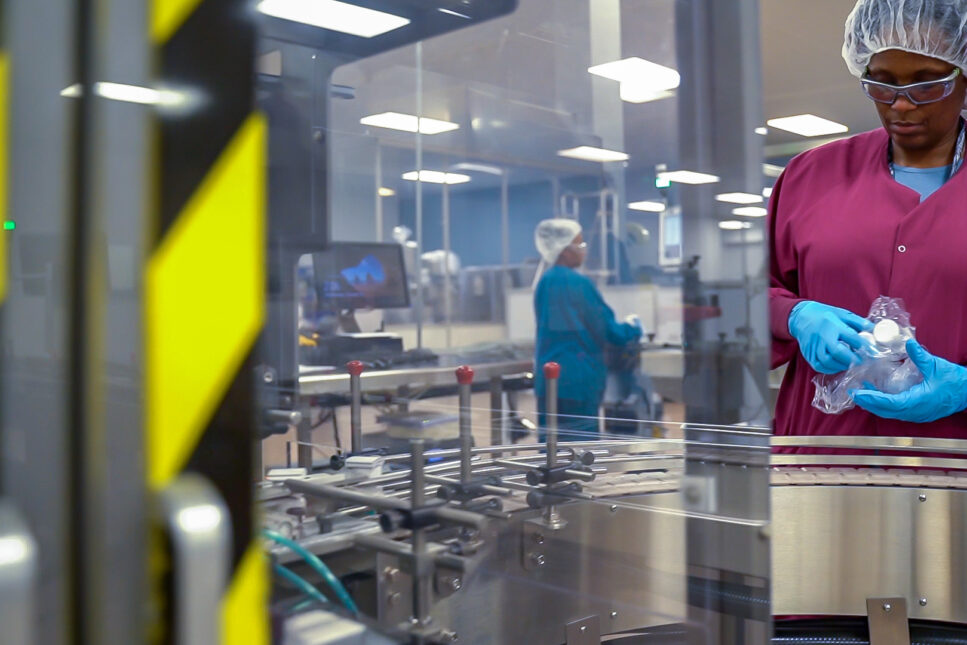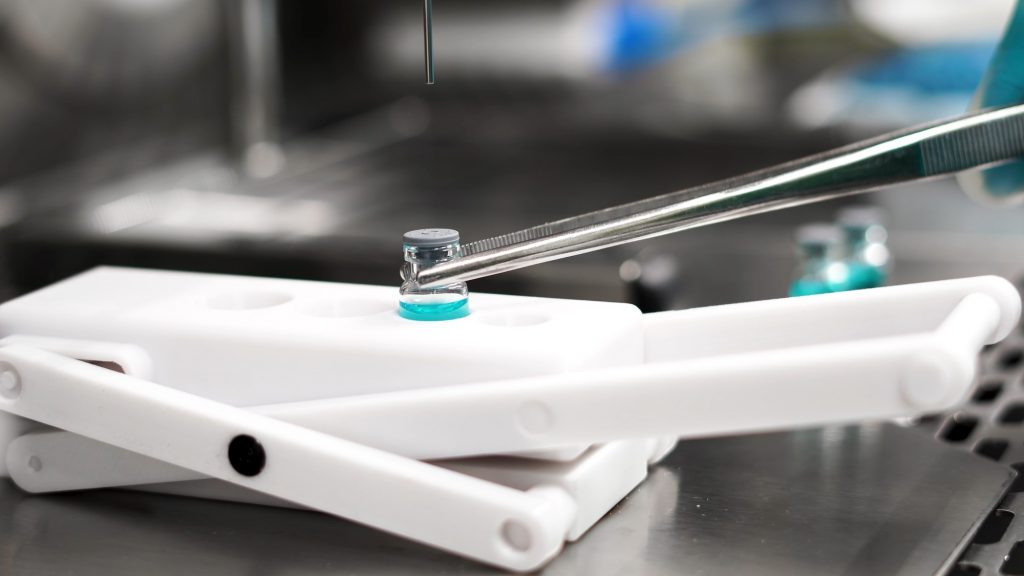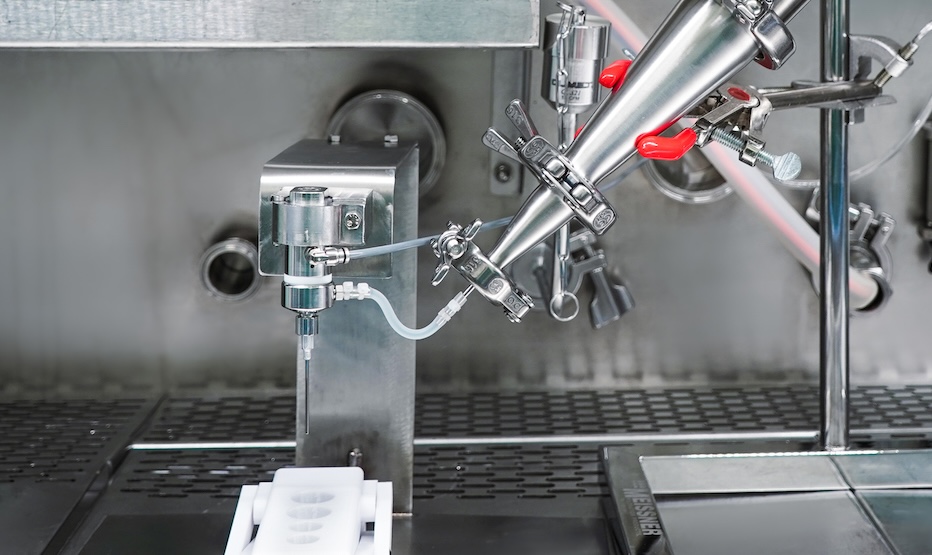In this Q&A with Rachel Curran, Head of Sourcing Services and Special Accounts, Sharp Clinical, we discuss the requirements, challenges and solutions to comparator and co-therapy drug sourcing for clinical trials.

What is comparator and co-therapy (or co-medications) sourcing and what is its impact on clinical trials?
Comparator and co-therapy drugs are used in a clinical trial as a reference to compare the performance of the clinical drug candidate. Sourcing sufficient quantities of the appropriate comparator drugs in timely and cost-effective way can often be a challenge. Roughly two-thirds of clinical trials involve the use of comparators and co-therapies and it is a vital strategic operation as it can lead to delays and increased costs if managed poorly.
“Roughly two-thirds of clinical trials involve the use of comparators and co-therapies…”
While procurement of materials at all trial phases requires attention, the detailed planning, identification and qualification of a sourcing network that meets the needs of a phase III trial can be time- and cost-prohibitive for sponsors. As a result, many sponsor project teams look for specialized sourcing agencies, choosing to outsource their procurement activities to a partner with the access, insight, and expertise to support their trials.
What challenges do sponsors and their clinical supply partners most often encounter when sourcing comparators and co-therapies?
Sourcing comparator and co-therapies for clinical trials has always been complex, however the evolving regulatory landscapes and political changes as well as anomalous events like the COVID-19 pandemic ask new questions of sponsors every time they plan a trial.
Access to comparators and co-therapy drugs
Ensuring the timely availability of the right quantity of comparators and co-therapy drugs is simultaneously complex and critical.
Manufacturer lead times, production schedules, batch sizes and product shelf-life need to be fully understood to obtain large quantities of a product. Reserve inventory for ongoing trials must also be considered to ensure guarantee of supply. Where an open-market approach (sourcing from wholesalers and distributors) is the chosen route, understanding their stock volume re-supply timescales alongside the product shelf-life is imperative.
Factoring in the likelihood and potential disruption of delays and manufacturing timescales is also an essential consideration during planning and will help minimize any disruption or risk to a trial.
Clinical trial regulations
For multi-national clinical trials regulations often vary between trial sites adding further challenges and additional work for sponsors.
It is not uncommon for a comparator or co-therapy drug to be unavailable commercially in a country where the trial is taking place and there may be restrictions on importing it. Additionally, the process of repackaging and blinding a product may also have unique regulatory hurdles and create further complexity.
Access to locally qualified staff who can help sponsors navigate these challenges is often essential to keeping supply chains moving.
Import/export challenges of sourcing medicinal products
Moving any goods across a border is complicated. For medicinal products, the challenge is even greater and newly introduced restrictions have meant further obstacles exist.
For example, in 2019, the UK introduced export restrictions that prevented sourcing of certain medications from the country. The list was added to during the pandemic to maintain supply domestically meaning there are now 170 products that cannot be exported from the UK while in its commercial livery.[1] Once supplies have been packed for a clinical trial they then can be exported.
Administrative burdens are also created as supply chains are stretched across multiple borders and networks of logistics providers. This can be complicated further where specialist cold-chain capabilities are required. Managing a network of third-party logistics providers is often unrealistic for sponsors and so they regularly opt to rely on clinical supply partners with an established network and presence in the locations where trials are taking place.
Managing cost and waste of clinical materials
The pressure on sponsors to control cost and waste is constant and this is true also for the sourcing of their comparators and co-therapies.
The best sourcing strategy is one that creates a reliable, secure supply chain, helping sponsors establish and control budgets and avoid the pitfalls which can lead to unnecessary waste and additional costs.
COVID-19 pandemic impacts on clinical supply chain
Many new challenges emerged during the COVID-19 pandemic for trial sponsors. International travel restrictions, heightened demand for ancillary supplies and co-therapies used in treating COVID-19 patients and changes to manufacturer’s priorities all affected the supply chain. Much focus is now being put on developing robust contingencies and localizing supply wherever possible.
How do you go about creating a strategy?
To establish a tailored and robust solution, sponsors and their supply partners need to start with a full determination of the parameters of the study, considering each one of the following:
- The type of product and strengths required (branded or generic)
- The quantities and timings for each campaign
- Lot specifications (single, multiple, specific lot number)
- Expiry requirements
- Requirements for documentation, what is mandatory and what is a ‘nice to have’
- Budget
- The region(s) in which the study is being undertaken
- How and where the supplies will be packed
- Whether study details be disclosed
This information alongside the study protocols will dictate the sourcing strategy.
Sponsors and their supply partners should start planning in the early stages of the project to create a robust sourcing plan, with contingencies to ensure supply chain integrity and continuity of treatment for patients enrolled in the trial.
What are the different sourcing options?
There are essentially three different approaches:
- Direct from manufacturer
- Open market (from wholesalers and distributors)
- Hybrid solutions
Each has pros and cons and the decision often hinges on the volumes required, the timescales and whether study details can be disclosed or not.
Direct from manufacturer vs open market sourcing
| Direct from manufacturer | Open market sourcing | ||
| Pros | Cons | Pros | Cons |
| Short supply chain | Disclosure of study details | No disclosure of study details | Complex supply chain |
| Documentation readily available | Longer lead times | Shorter lead times | Documentation not always available |
| Best expiry dates | Potential cost savings | Possibility of multiple batches | |
| Larger batch sizes | Central/country level | Shorter expiry dates | |
| Secure supply | |||
| Price | |||
| Central level |
In summary, how do you advise sponsors when addressing the challenges of comparator and co-therapy drug sourcing?
The most important thing with regards to procurement is to engage a clinical trial service partner early as this will establish the optimal sourcing strategy from the outset, decreasing risks and avoiding delays and ultimately saving money.
Often, using a partner that manages the full process including the purchase, formulation, packaging schedule and logistic solutions can work best. This simplifies third-party management and streamlines processes as the partner will have oversight of all the study’s requirements as well as existing access and established networks.
Sharp
Sharp is a renowned expert in comparator product drug sourcing. We have an established network of approved suppliers and can ensure the most efficient, compliant supply chain for your studies.





